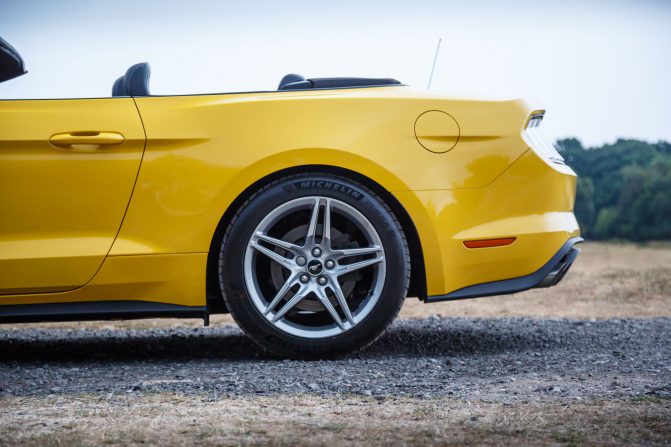In the dynamic realm of the automotive industry, the visual appeal of vehicles plays an increasingly pivotal role in capturing consumer attention and fostering brand identity. At the heart of this visual transformation lies the art and science of photography post-production.
Definition of Photography Post-Production:
Photography post-production refers to the meticulous process of refining and enhancing automotive images after the initial capture. It involves a comprehensive array of digital editing techniques, from color correction and retouching to composition adjustments, aimed at elevating the visual allure of automotive photographs.
Post-Production Role:
Within this visual landscape, the role of post-production emerges as a transformative force. It acts as the creative catalyst that takes raw automotive imagery and transforms it into a polished, attention-grabbing masterpiece. Beyond mere enhancement, post-production allows for the creation of a visual narrative, bringing out the unique features and qualities that set a brand or vehicle apart. This article explores the nuanced ways in which photography post-production acts as a cornerstone in the automotive industry, shaping perceptions, influencing decisions, and contributing to the overall visual language of automotive brands.
10 Crucial Impacts of Photography Post-Production
In an era dominated by digital engagement and online interaction, the significance of striking visuals has soared to unprecedented heights within the automotive industry. The shift towards digital platforms, social media, and online marketplaces has made visuals the forefront of brand communication. Potential buyers now navigate through a sea of images, making it imperative for automotive businesses to deliver visually captivating content to stand out in a crowded marketplace.
1. Digital Marketing and Branding
In the age of digital dominance, where first impressions are often digital impressions, the role of high-quality visuals in digital marketing cannot be overstated. This section delves into the profound impact of visuals in shaping digital marketing strategies within the automotive industry and explores how photography post-production plays a pivotal role in crafting compelling narratives.
The Significance of High-Quality Visuals:
Visual content has become the linchpin of successful digital marketing campaigns, especially in an industry as visually-driven as automotive. High-quality visuals have the power to convey emotions, tell stories, and create lasting impressions. In the context of automotive marketing, visuals serve as the initial touchpoint for potential buyers, influencing their perceptions and generating interest. The higher the visual quality, the greater the impact on the audience.
Role of Photography Post-Production in Car Media Branding:
In the world of Car Media, editing car photos is like the secret sauce for creating and keeping a unique brand style. By tweaking images just right, car media brands make sure their look stays the same everywhere—whether it’s in ads, brochures, or social media posts. It’s how they stand out and make their mark in the car media world! The meticulous touch of post-production not only ensures a cohesive brand image but also helps grab the attention of car enthusiasts, making the brand memorable and distinctive in the crowded automotive landscape. It’s the behind-the-scenes magic that turns ordinary photos into a powerful tool for brand recognition.
2. Virtual Showrooms and Online Presence
Photography post-production is key in shaping immersive virtual experiences, influencing online presence, and enhancing customer engagement in the automotive industry’s digital transformation.
The Role of Post-Production in Creating Immersive Virtual Showrooms:
In Car Media, tweaking car photos through editing is the key to crafting a consistent brand style. From sleek ads to engaging social media posts, this photography post-production magic ensures a distinct and memorable brand identity. It’s the secret ingredient that makes a brand stand out in the world of car media, capturing attention and leaving a lasting impression.
Impact on Online Presence and Customer Engagement:
In the automotive industry, post-production is a driving force behind a compelling online presence. Enhanced visuals not only attract potential buyers but also elevate the brand’s overall online impact. By showcasing vehicles with precision and artistic flair, post-production turns online viewing into an interactive experience, keeping customers engaged for longer durations.
3. Augmented Reality (AR) and Automotive Imagery
This section delves into the synergy of post-production and Augmented Reality (AR) in automotive visuals. Explore how this fusion enhances interactive experiences and discover future trends shaping the visual landscape of the automotive industry.
Integration of Post-Production with AR Technology:
- The seamless blending of post-production techniques with AR technology in automotive visuals.
- Crafting a synergistic approach that enhances the overall visual experience.
Enhancing Interactive and Augmented Experiences:
- Leveraging post-production to elevate the interactivity and augmentation of automotive content.
- Creating immersive experiences that captivate and engage the audience.
Future Trends in AR and Post-Production:
- A glimpse into the evolving landscape, exploring upcoming trends in the fusion of AR and post-production.
- Anticipating how this combination will shape the future of automotive visuals and consumer experiences.
4. Social Media Marketing:
Dive into the fusion of captivating automotive visuals and the influence of social media. Discover how post-production techniques craft shareable content, making a significant impact on trending platforms in social media marketing.
Influence of Visually Striking Images:
- Examining how visually striking automotive images wield influence on various social media platforms.
- Unveiling the power of captivating visuals in capturing audience attention and fostering engagement.
Crafting Shareable Content:
- The art of creating shareable automotive content through strategic post-production techniques.
- Leveraging visual appeal to encourage sharing, expanding reach, and maximizing brand exposure.
Impactful Platforms and Trends:
- Exploring social media platforms where post-produced images leave a lasting impact.
- Analyzing current trends in social media marketing and how post-production contributes to their effectiveness.
5. Product Presentation and Sales
Discover how post-production elevates automotive sales by enhancing vehicle presentation, influencing consumer decisions, and creating a positive sales environment.
Post-Production Role in Presentation:
- Unveiling the pivotal role of post-production in showcasing vehicles at their visual best.
- Enhancing the overall aesthetic appeal to captivate potential buyers.
Impact on Consumer Perception and Decisions:
- Examining how post-production influences the way consumers perceive vehicles.
- The correlation between visually enhanced images and positive purchasing decisions.
Contribution to a Positive Sales Environment:
- Exploring how meticulously edited visuals contribute to fostering a positive atmosphere for sales.
- The transformative effect of post-production in creating a compelling narrative that resonates with potential buyers.
6. 3D Rendering and Visualization:
Explore the dynamic synergy of 3D rendering and post-production in automotive design. Uncover the advantages of this combination and witness innovative examples that redefine the visualization landscape in the automotive industry.
Utilizing 3D Rendering and Post-Production:
- Exploring the synergy between 3D rendering and post-production for visualizing automotive designs.
- How these technologies work hand-in-hand to bring conceptual visions to life.
Advantages of Combining 3D Models with Post-Production:
- Unveiling the benefits of integrating 3D models with post-production techniques in the automotive design process.
- The transformative impact on refining, enhancing, and communicating design concepts.
7. Brand Differentiation and Competition
In the automotive hustle, post-production is the secret sauce for standing out. Discover how it elevates visuals, crafting a unique brand identity, and stay tuned for insights from a comparative analysis on market positioning and competitiveness.
Post-Production Role in Standing Out:
- Unveiling how post-production becomes a powerful tool for automotive brands seeking differentiation.
- Elevating visuals to stand out in a crowded and competitive market.
Creating a Unique Visual Identity:
- Exploring the process of crafting a distinctive visual identity through strategic post-processing.
- How post-produced images contribute to a brand’s signature look and feel.
Comparative Analysis of Brand Strategies:
- Conducting a comparative analysis between brands emphasizing post-production and those that don’t.
- Assessing the impact on market positioning, consumer perception, and overall competitiveness.
8. Efficiency and Consistency:
In this section, discover how post-production fuels efficiency and consistency. From streamlined processes through automation to maintaining a consistent visual style, explore the tech-driven tools shaping the post-processing journey for maximum impact.
-
Post-Production Automation:
- Streamlining visual processes through the efficiency of post-production automation.
- Accelerating and enhancing visual content creation via automated workflows.
-
Visual Style Consistency:
- Post-production pivotal role in maintaining a consistent visual style across diverse marketing materials.
- Ensuring uniformity in visual presentation to strengthen brand identity.
-
Efficient Tools and Technologies:
- Exploring the diverse range of tools and technologies integral to efficient post-production workflows.
- Providing a glimpse into the tech-driven landscape that optimizes the post-processing journey for maximum impact.
9. Environmental and Sustainability Focus:
Discover how post-production spotlights eco-friendly features, promotes sustainability, and enhances the visual impact of green campaigns in the automotive industry.
Highlighting Eco-Friendly Features:
- Showcasing how post-production brings attention to environmentally friendly features in automotive visuals.
- Amplifying the visual narrative around sustainability through thoughtful editing.
Promoting Sustainability through Edited Visuals:
- Exploring the role of post-production in advocating sustainability within the automotive industry.
- How edited visuals contribute to fostering a green and eco-conscious image.
Case Studies of Eco-Friendly Campaigns:
- Presenting case studies that exemplify how post-production enhances eco-friendly campaigns.
- Illustrating the visual impact and effectiveness of sustainability messaging through thoughtful editing.
10. Training Simulators and Educational Materials:
Explore the educational realm of post-production in this section. From realistic training simulators to enhanced learning materials, witness its impact. Look forward to future possibilities, envisioning the evolving landscape in automotive education.
Application in Training Simulators:
- Demonstrating how post-produced visuals play a crucial role in realistic training simulators.
- Enhancing the learning experience through visually enriched simulated environments.
Enhancement of Educational Materials:
- Exploring the contribution of post-production in elevating educational materials for automotive professionals.
- How edited visuals create engaging and informative content for effective learning.
Future Possibilities in Automotive Education:
- Anticipating future possibilities for leveraging post-production techniques in automotive education.
- Examining the evolving landscape of educational visuals and their potential impact on skill development in the industry.
Some Common Question That May Appear on Your Thought
How important is post-production in photography?
Post-production is essential in photography as it enhances and refines images, elevating their quality and storytelling potential. It allows photographers to correct imperfections, achieve a desired aesthetic, and bring out the best in their work.
What is the post-production stage of photography?
The post-production stage in photography involves editing and refining captured images after the photoshoot. It includes processes like color correction, retouching, and exposure adjustments to enhance visual quality and achieve the intended aesthetics.
What is automotive photography?
Automotive photography focuses on capturing visually appealing images of vehicles, emphasizing design and features. Techniques such as composition, lighting, and post-production are used to showcase vehicles in a dynamic and compelling manner.
What is the post process of photography?
Post-processing in photography involves editing and enhancing images after the initial photoshoot. Techniques like color correction, cropping, and car retouching are applied to refine and optimize the final visuals.
Final Though
In summary, photography post-production is reshaping the automotive industry by creating immersive experiences, influencing consumer decisions, and fostering brand differentiation. As we conclude, it’s clear that post-production is not just a tool; it’s a dynamic force driving innovation. The ongoing evolution suggests exciting potential for further advancements in visual content creation, ensuring a vibrant future for the intersection of technology and automotive aesthetics.


